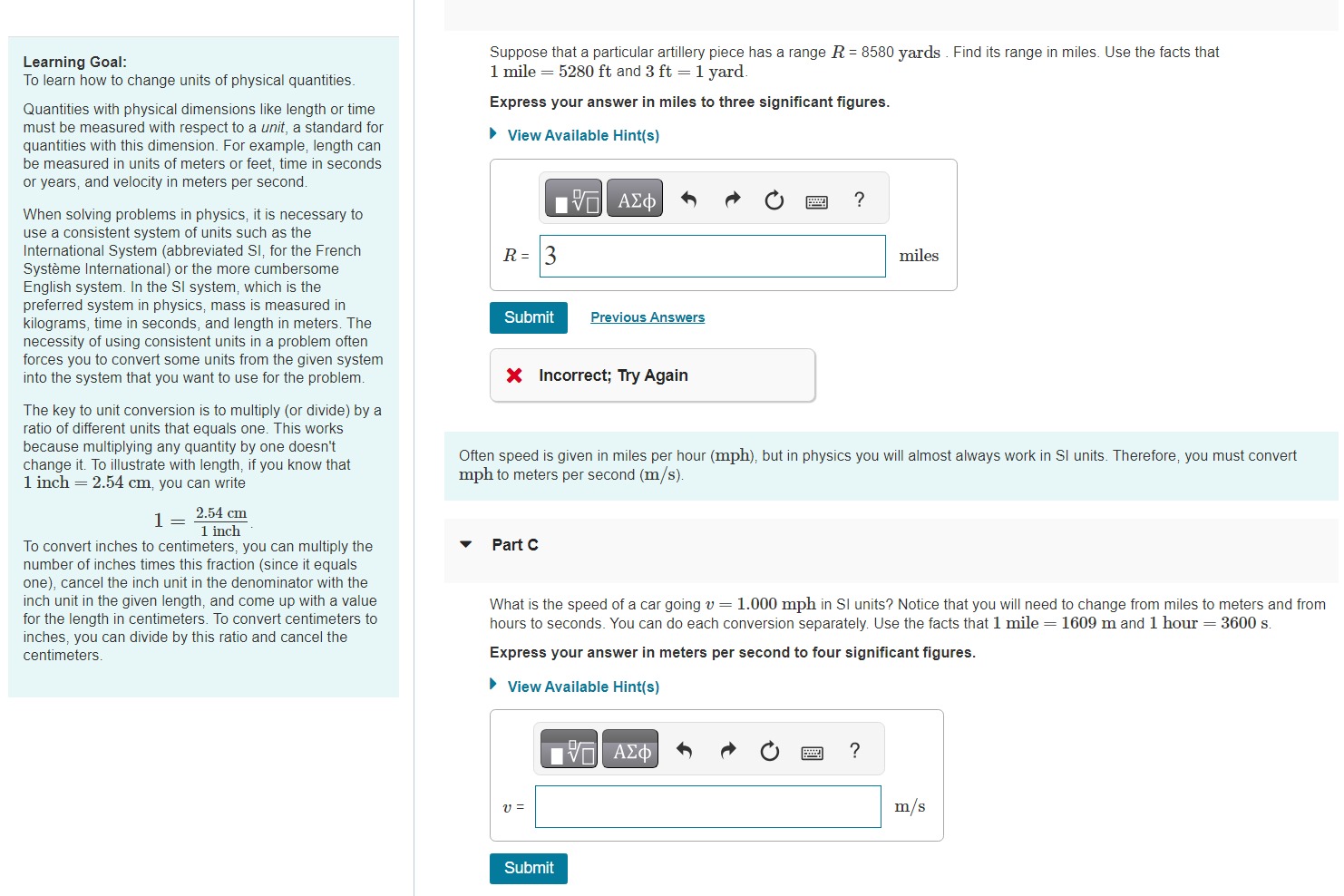Answered step by step
Verified Expert Solution
Question
1 Approved Answer
Learning Goal: To learn how to change units of physical quantities. Quantities with physical dimensions like length or time must be measured with respect

Learning Goal: To learn how to change units of physical quantities. Quantities with physical dimensions like length or time must be measured with respect to a unit, a standard for quantities with this dimension. For example, length can be measured in units of meters or feet, time in seconds or years, and velocity in meters per second. When solving problems in physics, it is necessary to use a consistent system of units such as the International System (abbreviated SI, for the French Systme International) or the more cumbersome English system. In the SI system, which is the preferred system in physics, mass is measured in kilograms, time in seconds, and length in meters. The necessity of using consistent units in a problem often forces you to convert some units from the given system into the system that you want to use for the problem. The key to unit conversion is to multiply (or divide) by a ratio of different units that equals one. This works because multiplying any quantity by one doesn't change it. To illustrate with length, if you know that 1 inch 2.54 cm, you can write 1= 2.54 cm 1 inch To convert inches to centimeters, you can multiply the number of inches times this fraction (since it equals one), cancel the inch unit in the denominator with the inch unit in the given length, and come up with a value for the length in centimeters. To convert centimeters to inches, you can divide by this ratio and cancel the centimeters. Suppose that a particular artillery piece has a range R = 8580 yards. Find its range in miles. Use the facts that 1 mile = 5280 ft and 3 ft = 1 yard. Express your answer in miles to three significant figures. View Available Hint(s) R = 3 Submit IVE X Incorrect; Try Again Part C Previous Answers V = Often speed is given in miles per hour (mph), but in physics you will almost always work in Sl units. Therefore, you must convert mph to meters per second (m/s). Submit ? What is the speed of a car going v= 1.000 mph in SI units? Notice that you will need to change from miles to meters and from hours to seconds. You can do each conversion separately. Use the facts that 1 mile = 1609 m and 1 hour = 3600 s. Express your answer in meters per second to four significant figures. View Available Hint(s) 17 miles ? m/s
Step by Step Solution
★★★★★
3.44 Rating (147 Votes )
There are 3 Steps involved in it
Step: 1
To convert yards to miles we will use the given conversion facto...
Get Instant Access to Expert-Tailored Solutions
See step-by-step solutions with expert insights and AI powered tools for academic success
Step: 2

Step: 3

Ace Your Homework with AI
Get the answers you need in no time with our AI-driven, step-by-step assistance
Get Started


